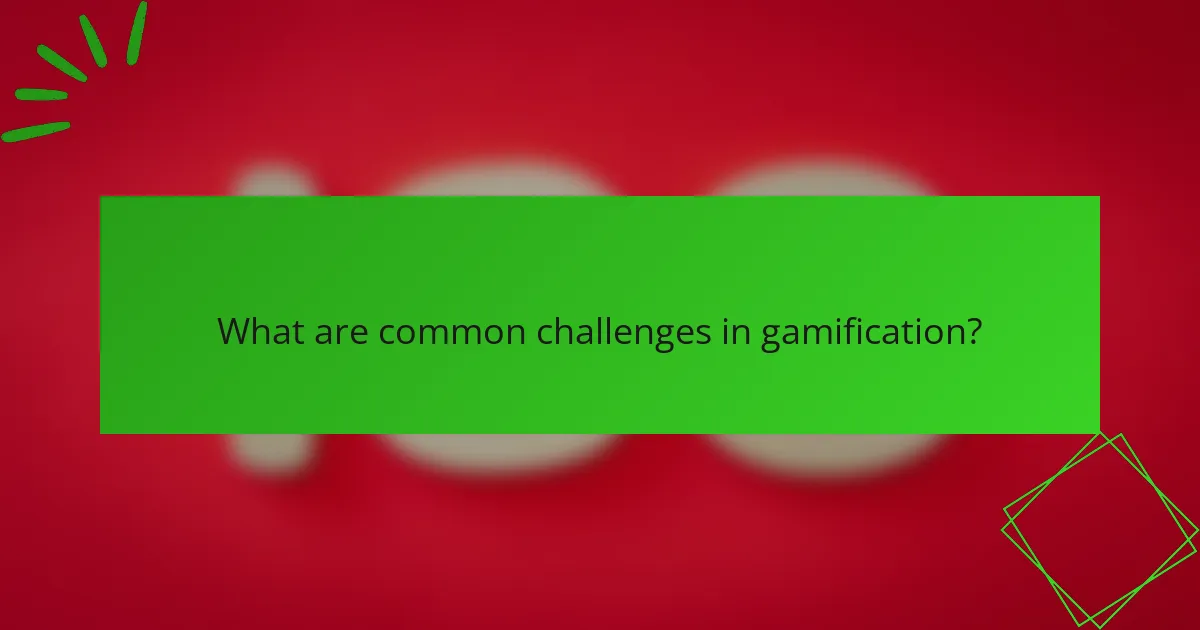Gamification techniques play a crucial role in enhancing user engagement and motivation within digital products by integrating game-like elements into everyday interactions. By incorporating rewards, challenges, and interactive features, these techniques transform mundane tasks into enjoyable experiences, encouraging users to engage more frequently and achieve their goals. This approach not only makes interactions more enjoyable but also fosters both intrinsic and extrinsic motivation, leading to increased user retention and satisfaction.

How can gamification enhance user engagement in digital products?
Gamification enhances user engagement by incorporating game-like elements into digital products, making interactions more enjoyable and motivating. By leveraging rewards, challenges, and interactive features, users are more likely to stay engaged and return to the product regularly.
Increased motivation through rewards
Rewards are a fundamental aspect of gamification that can significantly boost user motivation. By offering points, badges, or tangible rewards, users feel a sense of accomplishment that encourages continued interaction. For example, a fitness app might reward users with virtual badges for reaching milestones, which can motivate them to achieve their fitness goals.
To effectively implement rewards, consider using a tiered system where users unlock greater rewards as they progress. This approach not only keeps users engaged but also fosters a sense of competition and achievement.
Enhanced user retention with challenges
Challenges create a sense of urgency and purpose, which can enhance user retention in digital products. By presenting users with tasks or goals to complete, you encourage them to return frequently to meet these challenges. For instance, an educational platform might introduce weekly quizzes that users must complete to earn points or unlock new content.
When designing challenges, ensure they are achievable yet stimulating. Balancing difficulty levels can help maintain user interest without causing frustration, leading to a more satisfying experience.
Improved learning outcomes via interactive elements
Interactive elements in gamified digital products can lead to improved learning outcomes by making the learning process more engaging. Features such as quizzes, simulations, and interactive tutorials allow users to actively participate rather than passively consume information. This active involvement can enhance retention and understanding of the material.
For effective implementation, incorporate feedback mechanisms that provide users with immediate responses to their actions. This not only reinforces learning but also keeps users motivated to explore further. Consider using progress tracking to show users how far they have come, which can encourage continued engagement and learning.

What are effective gamification techniques for digital products?
Effective gamification techniques enhance user engagement and motivation by incorporating game-like elements into digital products. These techniques can transform mundane tasks into enjoyable experiences, encouraging users to interact more frequently and achieve their goals.
Point systems for user achievements
Point systems reward users for completing tasks or reaching milestones, creating a sense of accomplishment. Users can earn points through various actions, such as logging in daily, completing challenges, or sharing content. This system not only motivates users but also provides tangible feedback on their progress.
To implement a point system effectively, consider setting clear criteria for earning points and ensuring that users can easily track their scores. Avoid making the system overly complex, as simplicity can enhance user enjoyment and participation.
Leaderboards to foster competition
Leaderboards display user rankings based on their performance, fostering a competitive atmosphere. This technique encourages users to improve their scores to climb the ranks, which can significantly boost engagement. Leaderboards can be global or segmented by specific groups, allowing for tailored competition.
When using leaderboards, ensure they are updated frequently to maintain interest. Consider offering rewards for top performers to further incentivize participation. However, be cautious of discouraging lower-ranked users; balance competition with inclusivity to keep all users motivated.
Progress tracking for goal setting
Progress tracking allows users to visualize their journey towards specific goals, enhancing motivation and accountability. By breaking down larger objectives into smaller, manageable tasks, users can see their advancement and stay engaged. This technique is particularly effective in educational and fitness applications.
To maximize the effectiveness of progress tracking, provide clear indicators of completion and celebrate milestones. Regular feedback can help users stay on track and adjust their strategies as needed. Avoid overwhelming users with too much data; focus on key metrics that align with their goals.

How do gamification elements influence user motivation?
Gamification elements significantly enhance user motivation by integrating game-like features into non-game contexts, making tasks more engaging and enjoyable. These elements can foster both intrinsic and extrinsic motivation, encouraging users to participate more actively and persistently.
Intrinsic motivation through autonomy
Intrinsic motivation is driven by the desire to engage in an activity for its own sake, and autonomy plays a crucial role in this. When users have the freedom to make choices and control their actions within a gamified system, they are more likely to feel invested and motivated. For example, allowing users to select their own goals or customize their experience can lead to higher satisfaction and engagement.
To enhance intrinsic motivation, consider implementing features that promote user choice, such as branching paths or personalized challenges. Avoid overly prescriptive tasks that limit user agency, as this can lead to disengagement. Instead, encourage exploration and self-directed learning to maintain motivation levels.
Extrinsic motivation via tangible rewards
Extrinsic motivation relies on external incentives, such as rewards or recognition, to drive user behavior. Tangible rewards, like points, badges, or discounts, can effectively encourage participation and completion of tasks. For instance, a fitness app that offers discounts on gear for reaching milestones can motivate users to stay active.
When designing extrinsic rewards, ensure they are meaningful and aligned with user interests. Avoid overwhelming users with too many rewards, as this can dilute their value. Instead, focus on a few well-structured rewards that provide clear benefits, enhancing the overall user experience and motivation.

What are the best practices for implementing gamification?
Effective gamification involves integrating game elements into non-game contexts to enhance user engagement and motivation. Best practices focus on aligning game mechanics with user goals and continuously refining the approach based on user feedback.
Align game mechanics with user goals
To successfully implement gamification, ensure that the game mechanics resonate with the objectives of your users. This alignment helps in creating a meaningful experience that encourages participation and achievement.
Consider using elements such as points, badges, and leaderboards that directly relate to user aspirations. For instance, a fitness app might reward users with points for completing workouts, which can be redeemed for discounts on fitness gear.
Test and iterate based on user feedback
Regularly testing and iterating your gamification strategy is crucial for maintaining user interest and satisfaction. Gather feedback through surveys, user interviews, or analytics to understand what aspects are engaging and which need improvement.
Implement changes based on this feedback and observe how users respond. A/B testing different game mechanics can provide insights into what drives engagement, allowing you to refine your approach effectively.

What metrics should be used to measure engagement?
To effectively measure engagement in digital products, focus on metrics that reflect user interaction and satisfaction. Key metrics include user retention rates, time spent on the platform, and completion rates of gamified tasks.
User retention rates
User retention rates indicate the percentage of users who continue to engage with a product over time. High retention rates suggest that users find value in the product, while low rates may signal issues with user experience or content. Aim for retention rates above 40% after the first month to ensure ongoing engagement.
To improve retention, consider implementing personalized experiences or rewards that encourage users to return. Regularly analyze retention data to identify trends and make necessary adjustments to your gamification strategies.
Time spent on platform
Time spent on the platform measures how long users engage with your digital product during each session. Increased time spent often correlates with higher user satisfaction and deeper engagement. Aim for users to spend at least 10-15 minutes per session to foster meaningful interactions.
To enhance this metric, incorporate engaging content, interactive elements, and challenges that keep users invested. Monitor average session duration and adjust your gamification techniques to maintain or increase user interest.
Completion rates of gamified tasks
Completion rates of gamified tasks reflect how many users successfully finish the challenges or activities presented to them. High completion rates indicate that users are motivated and find the tasks achievable. Aim for completion rates of 60% or higher to ensure that tasks are appropriately challenging.
To boost completion rates, provide clear instructions and feedback, and consider offering incentives for task completion. Regularly review task performance and user feedback to refine the gamified elements and enhance user motivation.

What are common challenges in gamification?
Common challenges in gamification include overcomplication of game mechanics and neglecting user feedback. These issues can hinder user engagement and motivation, ultimately undermining the effectiveness of gamified systems.
Overcomplication of game mechanics
Overcomplicating game mechanics can confuse users and detract from the intended experience. When game elements are too intricate, users may feel overwhelmed, leading to disengagement rather than motivation.
To avoid this pitfall, focus on simplicity and clarity. Use straightforward rules and intuitive designs that enhance the user experience without adding unnecessary complexity. For instance, a basic points system may be more effective than a convoluted leaderboard with multiple tiers and rewards.
Neglecting user feedback
Neglecting user feedback can result in gamification strategies that do not resonate with the target audience. Users often have valuable insights into what motivates them, and ignoring their input can lead to a disconnect between the gamified experience and user expectations.
To effectively incorporate feedback, regularly solicit user opinions through surveys or focus groups. This can help refine game mechanics and ensure that the gamification elements align with user preferences, ultimately increasing engagement and satisfaction. Aim to implement changes based on feedback within a few weeks to maintain relevance and responsiveness.

How does gamification differ across industries?
Gamification varies significantly across industries, as each sector applies techniques tailored to its specific goals and audience. While the core principles of gamification remain consistent, the implementation and desired outcomes can differ widely, influencing user engagement and motivation strategies.
Education vs. corporate training applications
In education, gamification focuses on enhancing learning experiences and improving student engagement. Techniques such as points, badges, and leaderboards encourage participation and foster a sense of achievement among learners. For instance, platforms like Kahoot! use quizzes to make learning interactive and competitive.
Conversely, corporate training applications prioritize skill acquisition and performance improvement. Gamification in this context often includes simulations and scenario-based learning to mimic real-world challenges. Companies may use platforms like Axonify to deliver training modules that reward employees for completing tasks and achieving learning milestones.
While both sectors utilize gamification to boost engagement, education leans more towards fostering a love for learning, whereas corporate training aims to enhance productivity and efficiency. Understanding these differences helps organizations tailor their gamification strategies effectively.









